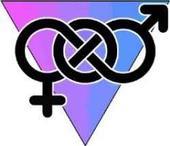 Lots of folks — including many gay people — have long dismissed the idea of genuine bisexuality. Yes, most of us started out sampling from the hetero platter in high school before coming out as gay, but how much of that was social pressure and how much genuine arousal?
Lots of folks — including many gay people — have long dismissed the idea of genuine bisexuality. Yes, most of us started out sampling from the hetero platter in high school before coming out as gay, but how much of that was social pressure and how much genuine arousal?
Well, a study, reported on by Healthy Living News, says that bisexual arousal really does exist. The study used a variety of controls to determine which men physically reacted to same-sex sex, disputing other studies which have suggested bisexuality, among men at least, is a myth.
Read the full story, which we’ve reprinted with permission, below.
Health Living News
Two new studies have shown what many have long understood. That some human males are aroused by both men and women. Both studies refute previous research on male bisexuality.
The first study, entitled “Sexual Arousal Patterns of Bisexual Men Revisited” was recently published in the journal Biological Psychology.
The study recruited 100 self-professed bisexual, heterosexual and homosexual men. All three groups of the men watched straight and gay sex videos. While watching the videos their genital responses were monitored with sensors. Subjective responses also measured how much the men liked or disliked the videos as they watched them.
The results showed that the bisexual men in the study were physically aroused by videos of men having sex with men and women having sex with women.
The other study, published in Archives of Sexual Behavior last spring, used a slightly different approach to validate the existence of male human bisexuality.
That study of bisexual, heterosexual and homosexual men also monitored the physical and subjective arousal effects from watching adult movies. But it included a movie of men having sex with both a women and another man. This “bisexual stimuli” as the researchers called it, depicted a woman and man fondling each other while both fellating another man, vaginal intercourse, and male on male anal intercourse. The movie had a greater arousal effect on the bisexual men than on the heterosexual and homosexual men in the study.
Both the new studies contradict the findings of similar research which questioned whether some men can be aroused, or turned on, by both sexes. That controversial study, “Sexual Arousal Patterns of Bisexual Men” was published in 2005.
Michael Bailey, a researcher on that study infamously told the press at the time, “I’m not denying that bisexual behavior exists, but I am saying that in men there’s no hint that true bisexual arousal exists.”
Many regarded that research as flawed because it may have studied self-professed bisexual male participants who were not actually bisexual. The researchers on that 2005 study, including Michael Bailey, now agree.
“The bisexual samples of previous studies may have been populated by men who had never or rarely behaved bisexually and perhaps identified as bisexual for reasons other than strong arousal to both sexes,” the researchers now claim.
The two newer studies used different recruitment criteria to increase the probability of finding men who were bisexually aroused rather than those who identified as being bisexual for other reasons.
These included on-line recruitment from websites serving bisexuals. The men in the “Bisexual Men Revisited” study also had to have had sexual relations with two people of each sex as well as have been in a three-month relationship with one person of each sex.
The new studies even used the famous 1948 Alfred Kinsey 0-6 scale in their research to help pinpoint and define bisexuality. In that scale, 0 means exclusively heterosexual, 6 exclusively homosexual, with varying degrees of bisexuality in between.
Despite proving that some study participants were in fact bisexual, the researchers believe that there are likely sexual preference variables that go beyond Kinsey’s original scale. Yet the new studies still pay homage to Kinsey’s landmark research of long ago.
”It appears that some men may identify as bisexual because they are sexually aroused by both sexes, even if they experience considerably more arousal to one sex than the other,” the researchers wrote.
The new studies also suggest that bisexual preference variables are within a continuum that may change somewhat depending on time, mood and other circumstances.
“Men with bisexual arousal patterns may experience temporal fluctuations in their attractions and arousal to men and to women,” one study concluded. “Thus, a bisexual man may be more aroused by male stimuli at one time point but by female stimuli at another time point.”
















Thanx for finally posting something about this 🙂
If we want the world to judge us based on our actions and not judge us based on our sexual orientation then we can not use our sexual orientation, whatever it is, as a reason for good or an excuse for poor personal actions.